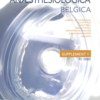Safety and follow-up systems after ambulatory peripheral nerve block: a narrative review
Locoregional anesthesia, peripheral nerve blocks, ambulatory surgery, follow-up, eHealth
Published online: Mar 21 2023
Abstract
Background: Ambulatory surgery has grown during the last decades, and Peripheral Nerve Blocks (PNB) are widely used for perioperative and postoperative pain management. Follow-up is required during all stages of recovery to assess adverse events. Patients are usually discharged before PNB effects have worn off, but next-day follow-up allows the detection of adverse events. Digital systems are used for different follow-up services, but knowledge is lacking in their use for PNB follow-up.
Objective: This narrative review describes PNB-related adverse events and current ambulatory surgery follow-up practices during all recovery stages. Furthermore, this review will evaluate the methods used for PNB follow-up.
Methods: A literature search was performed using SCOPUS, Embase, and MEDLINE databases from the earliest record to 01-03-2022. Articles were included if they assessed PNB-related adverse events, follow-up services for ambulatory surgery and PNBs, and outcomes for ambulatory surgery and PNBs. Articles were excluded if they studied non-surgical patients, were inaccessible or contained comments or letters.
Results: 67 articles were included after screening. Three postoperative phases are described. Phase 1 encompasses the post-anesthetic care unit (PACU) stay. Phase 2 covers the time from PACU discharge to hospital discharge, and phase 3 starts after hospital discharge. The review shows that follow-up is provided adequately during the postoperative phases 1 and 2, but phase 3 lacks a proper follow-up. Possible complications for PNBs include pain, nausea and vomiting, dyspnea, neurological damage, and infection should be routinely evaluated postoperatively, preferably the day after discharge. Postoperative follow-up is often provided using a telephone call, but a lost-to-follow-up rate of up to 50% is described. Follow-up rates can be improved using digital follow-up systems, including automatic text messages and applications. Video consultations can be used to evaluate these complications.
Conclusion: PNB postoperative follow-up after discharge is not well-provided. Telephone follow-up of PNB has a poor response. Digital follow-up systems, like automatic text messages and applications, can increase follow-up rates. Therefore, we recommend application-based follow-up systems. However, additional studies should evaluate the effect on patient outcomes.
